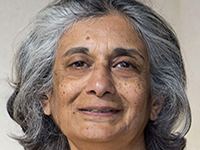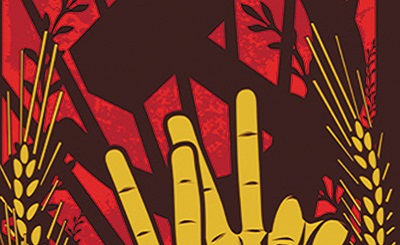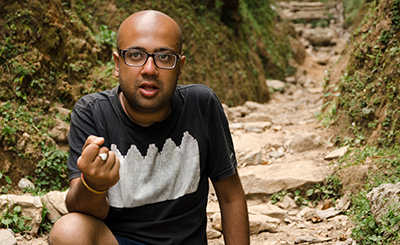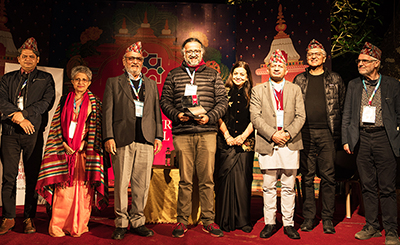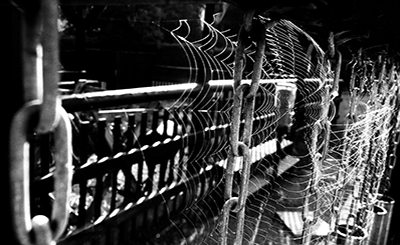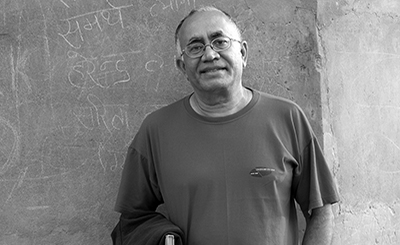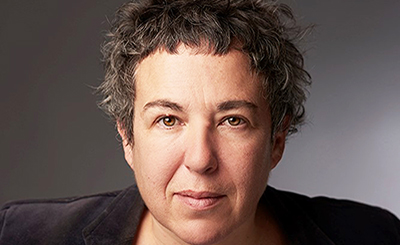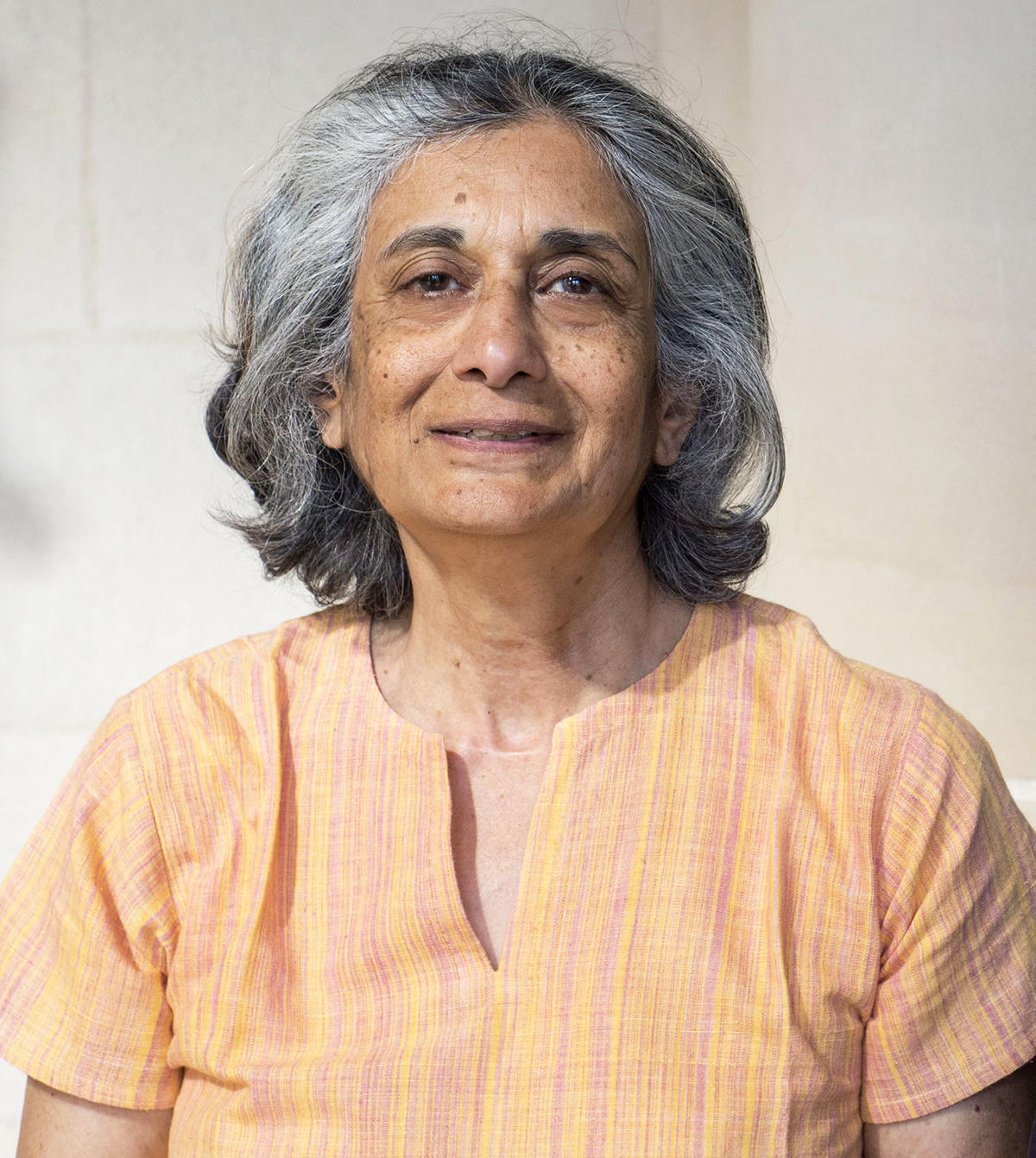
Publisher and author Ritu Menon, founder of Women Unlimited, an associate of Kali for Women. Photo: Jonathan Page
My Address Book for South Asia is a kind of (personalised) history of the issues and challenges we faced as women, and as feminists, in the region, and our response to them as writers and publishers
One of the first books we published as Kali — and the first that was co-published under licence from Zed — was Kumari Jayawardena’s Feminism and Nationalism in the Third World (1986), in which she argued that the feminist impulse in colonised countries arose at the same time as their awakening to, and struggles for, independence, that feminism and nationalism were co-terminus. It was an important claim, and a necessary one, that countered the view (often shrill) that the non-West was merely mimicking the West’s movement for women’s liberation; that women in the South were “bra burners”, like their militant counterparts in societies whose culture and “traditions” were alien. The Indian Left was part of this chorus, so did they think, then, that Marx was from Kerala?
Kumari is a Sri Lankan socialist feminist, a leading light in her country, known for her work on the labour movement, and her consistent championing of the cause of the underdog. Publishing her book, and Kamla Bhasin’s sustained work with women in South Asia, were responsible for our own long involvement with the women’s movements in Pakistan, Bangladesh and Sri Lanka, and as a feminist publisher, with women’s writing in all three. My Address Book for South Asia is a kind of (personalised) history of the issues and challenges we faced as women, and as feminists, in the region, and our response to them as writers and publishers.
The mid-Eighties were a tumultuous time in the subcontinent. Indira Gandhi was assassinated in 1984 (the year we set up Kali), a year that saw the shocking and orchestrated massacre of Sikhs in many parts of the country as a result; one year earlier, in 1983, Tamils in Sri Lanka, and especially in Colombo, suffered the same fate at the hands of Sinhala nationalists; and in Pakistsan, President Zia-ul Haq’s aggressive project of Islamisation was introducing the most regressive laws, like the Hudood Ordinance, particularly with regard to women. Pakistani women, alone among the progressive forces in Pakistan, were out on the streets, protesting these laws and the increasing hold of the mullahs in enunciating them. So, too, in Sri Lanka, it was women, together with labour unions, progressive journalists and lawyers, who spoke up against the Sinhala-only chauvinists and the monks who supported them.
Meanwhile, in India, two events took place that galvanised the women’s movement against state policy, fundamentalism and obscurantism. In 1986, a divorced Muslim woman, Shah Bano, was denied maintenance under a secular law because, the court ruled, she was subject to the Muslim Personal Law in matters pertaining to marriage and divorce, and, therefore, to maintenance; and in 1987, Roop Kanwar, a young woman in Rajasthan, was burnt on her husband’s funeral pyre in keeping with Rajput “tradition” and in direct violation of the law prohibiting sati.
Two issues — religion-based identity and ethnic nationalism — brought the women’s movements in Pakistan, India, Sri Lanka and Bangladesh together, transcending national borders. These had been under stress ever since the Partition of India in 1947, and were exacerbated by the war of independence in Bangladesh in 1971. An impending secession by Tamils in Sri Lanka to forge a new nation, Tamil Eelam, triggered an ethnic and civil war that engulfed the island for 33 years. Nationalism itself was an issue. The question of who we are, and of who belongs where, and under what conditions, rose to the surface in each of the four countries, with particular relevance for women. Do women have a country? Are we defined by religion and ethnicity or by secular citizenship? Which of our multiple identities should be privileged? And by whom?
Over the years, as these issues became entangled with movements for self-determination across the region, we worked collaboratively with women’s groups, convinced that we needed to act in solidarity as South Asians, because what happens with regard to the issues in one country has repercussions in all. The women’s movement was not alone in this belief. The peace and environment movements, the labour movement, Physicians Against Nuclearisation, the independent human rights commissions in each country, worked in tandem, releasing statements; engaging in Track II diplomacy; organising people-to-people conferences, rallies, meetings, and campaigns; working on projects together — and publishing books.
These links not only allowed us a glimpse of the political contexts in each of the countries, they made for strong associations and lasting friendships that were professional, and also very personal. We published much of the feminist writing that was being done in Pakistan and Sri Lanka during the 1990s and 2000s, by scholars, activists and creative writers, many of them dealing with major issues for the first time. They also became an informal source of information that would never have been made public — Kumari reported on her meetings with the women’s cadre of the LTTE, and of her attempts to introduce them to feminism, via Kamla’s pamphlets, published by us and translated into Tamil by the SSRC (Social Science Research Council) in Colombo. Radhika Coomaraswamy regaled us with accounts of her meetings with heads of state when she was the UN Special Rapporteur on Violence Against Women, the most memorable being the one with Fidel Castro. Malathi de Alwis, who had been working on a material memory project, spoke about her interviews with the Mothers Front of the Disappeared during the civil war, and of the ambivalent responses to the IPKF among the Tamils and the Sinhala population. None of them, though relieved at the end of the war, is reconciled to the uneasy peace that prevails in the north and east of Sri Lanka. I recall Vasuki saying, at one of our meetings, that for Tamils in Batticalao peace was “a filth word”, because no one wanted the war to end — there were too many vested interests involved in keeping it going.
***
Those pamphlets of Kamla’s? Everyone thought we were mad when we said we would publish everything from pamphlets to PhDs, because which publisher can afford to cast its net so wide? Focus is what was called for. Well, our focus was women, and if this called for engaging with everything from activist material to academic research, we would do so.
Kamla & Nighat’s Feminism and Its Relevance in South Asia was probably the first “book” we published, in 1986, and it has remained in print ever since. It has sold and sold and sold in the tens of thousands, but never entered a bookshop. It’s been translated into Urdu, Bangla, Tamil, Sinhala, Nepali, Turkish, Bahasa Indonesia, Marathi ... and I can’t remember how many other languages. It was followed in quick succession by What is Patriarchy? Understanding Gender and Exploring Masculinity, a set of four that we called Gender Basics. They have been used across South Asia, SE Asia and West Asia by feminists and activists, trainers and teachers, and even been adapted by the Indira Gandhi National Open University for its students.
Those pamphlets are a clear and shining example of how national borders dissolve when information and experience are shared.
Borders. Ours is a Partition family that came to Delhi from Lahore in 1947. I remember that the first time I visited Lahore, in 1987, I experienced such a shock of recognition that it left me stunned. I was the first person in our extended families to go to Pakistan, and I might never have done so had it not been for our links with the women’s movement there — with Nighat Said Khan, Rubina Saigol, and Shelley Zia; with Shahnaz Rouse, Saba Khattak, and all the other women I worked with over the years, and have published. Friends arranged a talk by me at Kinnaird College, where my mother and aunts had studied; I went to my grandparents’ house on Nisbet Road, still there, but now turned into a bank’s office. I walked in Lawrence Gardens, ate at a pavement restaurant in Anarkali, shopped for jootis in Liberty — and heard Iqbal Bano sing her rousing rendering of Faiz’s “Hum Dekhenge” at Alhamra, the very first time she sang it in public, in open defiance of Zia’s strictures against music and dance.
That visit to Pakistan was a bitter-sweet experience, so familiar, yet so different. We spoke the same language — Urdu, Punjabi — but it meant something else. Wore the same clothes, but they had a different significance, for it was rare to see a woman in a sari in Pakistan’s Punjab. But it can never really be an alien country because we have too much in common. Heartbreakingly so, as the people have been wrenched apart.
It was only natural, then, that we make available in India what was being written and produced by women in Pakistan, and forge the kind of relationships with writers and publishers there that continue to this day. All of them are still in my Address Book for Pakistan, with the addition now of mobile numbers! OUP (Karachi) published many of our Qurratulain Hyder and Ismat Chughtai titles in Pakistani editions; they also published Rashid Jehan’s A Rebel and Her Cause, and Kamla and my Borders & Boundaries; the very first anthology of stories by Pakistani women, And the World Changed, edited by Muneeza Shamsie (Kamila’s mother); and Attia Hosain’s Distant Traveller. We published Khadija Mastur’s Cool, Sweet Water and Inner Courtyard, translated by Tahira Naqvi and Neelam Hosain, respectively, and all ten of our Chughtai titles have been translated by Tahira, a Pakistani academic and writer in New York.
Distant Traveller had an interesting provenance, and in a way, illustrates the spontaneous and deep empathy that exists between Indians and Pakistanis at the level of the everyday.
One knew about Attia Hosain’s Sunlight on a Broken Column (1961) almost before one read TS Eliot’s poem, so indelibly had the novel become a part of growing up, and growing into, modern Indian writing. That pitch-perfect prose, redolent of a place and time steeped in nostalgia; the figure of the heroine, Laila, moving through empty-yet-filled rooms, filled with haunting memories, and that one stunning image —
Into this vast room the coloured panes of the arched doors let in not light but shadows that moved in the mirrors on the walls and mantelpiece, that slithered under chairs ...hid behind marble statues, lurked in giant porcelain vases
— like a kaleidoscope dimmed. Over the years, you returned to the novel again and again, finding in it a meaning you hadn’t grasped earlier, a subtext that now seems so obvious, an unusual subtlety of observation.
But then there was nothing more. No stories, no short fiction, no novels. Where did Attia Hosain go and why did she stop writing?
For us in India, she had become something of a distant presence herself by then. Living and working in London, her visits to India, though regular, remained family-and-friends oriented or limited socially to the literary circles of Bombay and Lucknow. All the years that I was working as an editor in various publishing houses in Delhi in the ’70s, she was a tantalising absence. In London, however, she was more than actively involved with radio and television and on the stage. And then, in the 1980s, she made a remarkable comeback with the reissue by Virago of both Sunlight and Phoenix Fled, in 1988.
Her earliest writing, Attia Hosain has said, was in her diary, begun when she was just fifteen, a diary not of events but of emotions: “I suppose that is the inevitable form of the diaries of young introverts without much self-confidence.” She developed what she called an “irritating habit” of blanking out in the middle of a conversation, staring into space — or looking inwards, perhaps? — even as the person with her continued talking. “Where are you?” they would complain, “I was talking to you.” Where she was, was busy transcribing the conversation mentally, “writing it within inverted commas”, using it later as a study or as a starting point for “other pieces of dialogue in a book I was forever writing in my mind”.
Friends in England had to lock her in a room to make her write and she would routinely destroy a great deal of what she wrote. When Chatto & Windus accepted her first anthology, Phoenix Fled, in 1953, she was gratified that she had been published, not because the content was Indian or that she was a woman, but because the stories were good. Eight years later, in 1961, they published Sunlight, with Cecil Day Lewis as her editor for both books.
More than 50 years later, walking down a leafy London street with the writer and literary critic, Aamer Hussein, he mentioned casually that 2013 would be Attia Hosain’s centenary year and that her children were thinking of putting together a miscellany to commemorate the occasion. Would I be interested in publishing it? he asked. I responded with cautious interest, wondering what such an offering would contain. A selection from Phoenix? Excerpts from Sunlight? From some of her essays, perhaps? Wouldn’t it be too much of a mixed bag? There may be some new material, Aamer replied (also somewhat cautiously), so of course I perked up. Not enough by itself for an anthology, but something old, something new, might be just the thing for a centenary? There are some unpublished stories, he continued, maybe even chapters from a new novel ...
So, she hadn’t destroyed everything ...
And, yes, I was more than willing to see what we could do with this, a slow excitement building up in me at the thought of a ‘new’ Attia book. We agreed that Aamer would make a preliminary selection from Phoenix, which her daughter, Shama Habibullah, and I would concur with or modify, as far as previously published stories were concerned; and then we would together read the new material and agree on a final selection.
It would be true to say that I had no idea what to expect from the latter.
Shama sent xeroxes of the unpublished stories to Aamer in London who sent them to me in Delhi; I photocopied them and sent one set back to him so that we all now had copies of the manuscripts to refer to in our inter-city, international communication — but it also made for some interesting problems as we went along! It’s been a long time since I read a typewritten script and that, too, obviously tapped out on a manual typewriter! On foolscap sheets, some clear, some where the ribbon was clearly a bit worn and the copy smudged; with xeroxing the impression was even less clear, though still legible. And at least three stories were only handwritten. There was no way to tell whether these archival pieces were first drafts, revised texts, works-in-progress or finished pieces — except by conjecture. If they hadn’t been published, was it because they were incomplete or still being worked on? Was this because Attia herself had rejected them or simply forgotten about them? Would she, meticulous craftswoman that she was, have wanted them published at all in this (possibly inchoate) form? Could we take her handwritten amendments or crossings-out as final, tentative or ... ? And then, the BIG question — when exactly had they been written?
The chapters from the unfinished novel were only in handwritten form, on unlined foolscap, one-sided sometimes; at others, partly continued on the reverse or with notes and additions in the margins, trailing across the top of the page or carried over on the back. How impossible it is, in these days of effortlessly erasing, transposing, rewriting and deleting on a computer, to see the actual process at work, the half-formed, tentative thought before it becomes fixed on the page, assured and unchanging.
Early on in our discussions we agreed that this would be a fiction anthology rather than a miscellany; and, except for the inclusion of ‘Deep Roots’, her most recently published essay of 2000, there would be no non-fiction in it. And so, in January 2012, we began keying in the unpublished material, stories and novel chapters, while simultaneously making a selection from Phoenix.
Attia Hosain’s earliest stories were published while still in her teens, as a university student; of the six or seven unpublished ones that we were considering, Shama and Aamer conjectured that at least four, if not five, had been written as early as the 1930s; only one, ‘The Old Man’, possibly in the 1960s. ‘Storm’, ‘The Healer’, ‘Leader of Women’, ‘Coolie’ and, probably, ‘Journey to no End’, as well, were apparently her made-in-India stories, most likely written while still a student or shortly thereafter. This was something of a revelation, at least for me, for the texture and sophistication of the stories were remarkable; and in ‘Storm’, ‘The Old Man’, ‘Healer’ and ‘Journey to No End’ there is a sensibility and critical insight so astute as to even eclipse some of her later published stories. They came to her “almost complete”, she has said.
Sunlight was Attia’s last published work but she continued to write voluminously, filling her journals and notebooks with accounts of her travels; reflections on literature and life; personal circumstances and family affairs; events in politics and society around her — and a new novel. It remained incomplete, but the chapters Shama found, as well as the notes to herself that Attia made regarding characters, relationships, plot development and location indicate a work of astonishing power and depth.
It is set in London of the 1970s (1972 to be precise) and would have been her only fiction located outside India. The characters are diasporic South Asians (as they are now classified), Indians, Pakistanis and Bangladeshis, making their way in a country and at a time that was tense with a reactionary politics. Enoch Powell, conservative MP, had threatened that “rivers of blood” would flow if there were not an immediate and drastic curb on immigration.
The novel had no name; the title we gave it — No New Lands, No New Seas — is taken from a poem, ‘The City’, by the Greek poet, C P Cavafy, exiled in Alexandria. It held particular significance for Attia, who found in its haunting evocation of loss and unfulfillment an echo of her own deep sense of out-of-placeness. Here she was, in a country she had chosen to live in, a country that had given her so much.
But I cannot get out of my mind the fact that I had the blood of my ancestors for 800 years in another country. It is this that drove me to write. Maybe it was because, as a stranger here, it was easier to collect one’s scattered bits together in one piece. Maybe it is that, with the years, one’s sense of values becomes clearer and there is an end to wandering away from the things which give real satisfaction.
Among my London addresses, one of the most cherished is Aamer’s, as he has participated in and contributed to our publishing in so many ways. Writing introductions and Afterwords, recommending writers (Sunetra Gupta being one of them), reading almost everything I write — and being a lively and knowledgeable conversationalist, always. It was Aamer who gave me one of Attia Hosain’s journals to read, the one in which she writes about her failed marriage and her decision to move to England, as a result. I have long wanted to publish her journals, intuiting that there may be a clue to her ceasing to write in them, but Shama, as her literary executor, is disinclined. Her brother, Waris, on the other hand, is keen.
Excerpted from Address Book (Women Unlimited)
This piece is part of The Women’s Issue, curated by Shireen Quadri
More from The Byword
Comments
*Comments will be moderated



